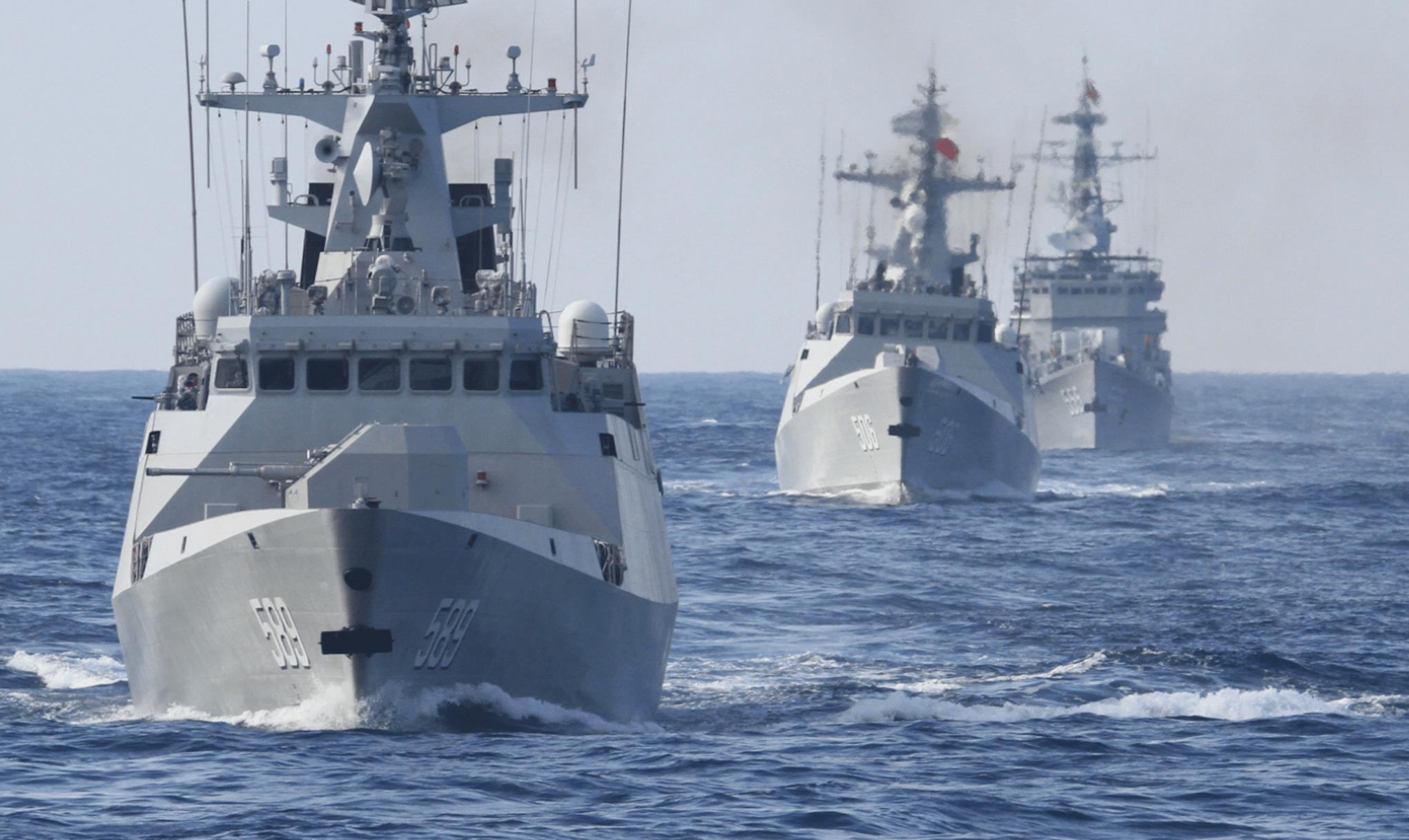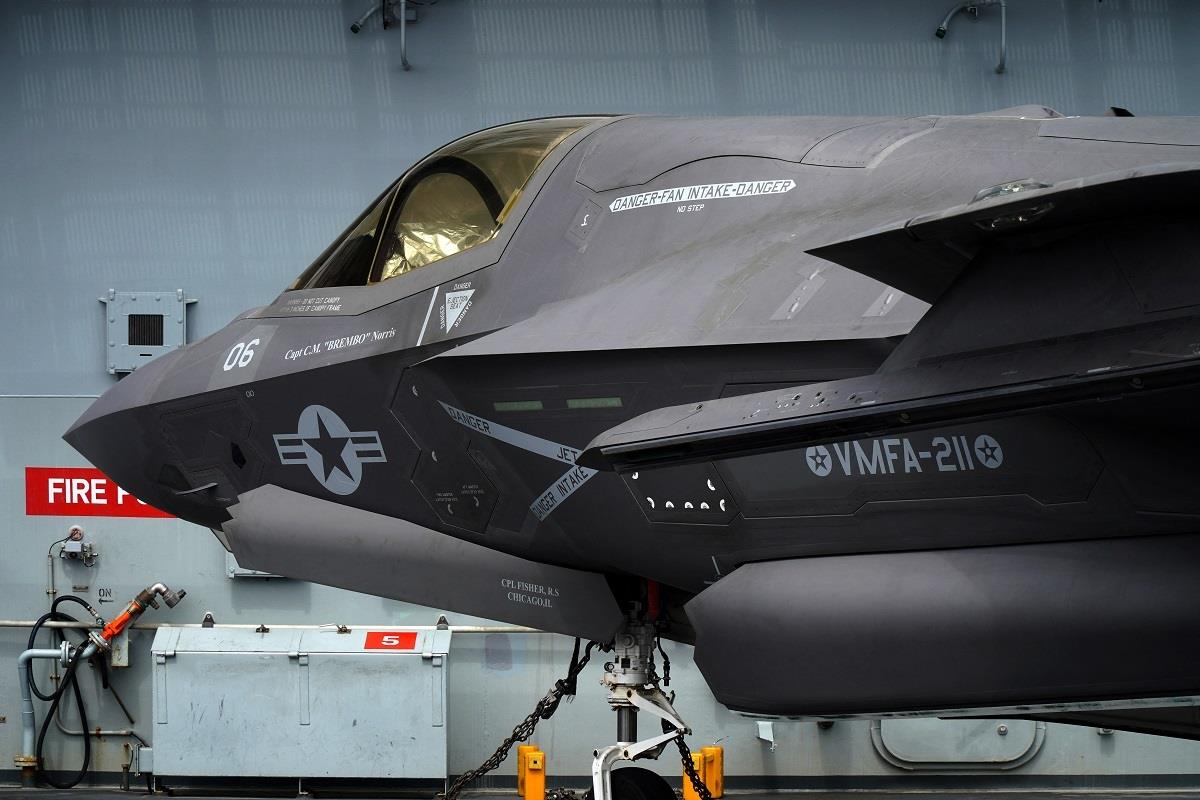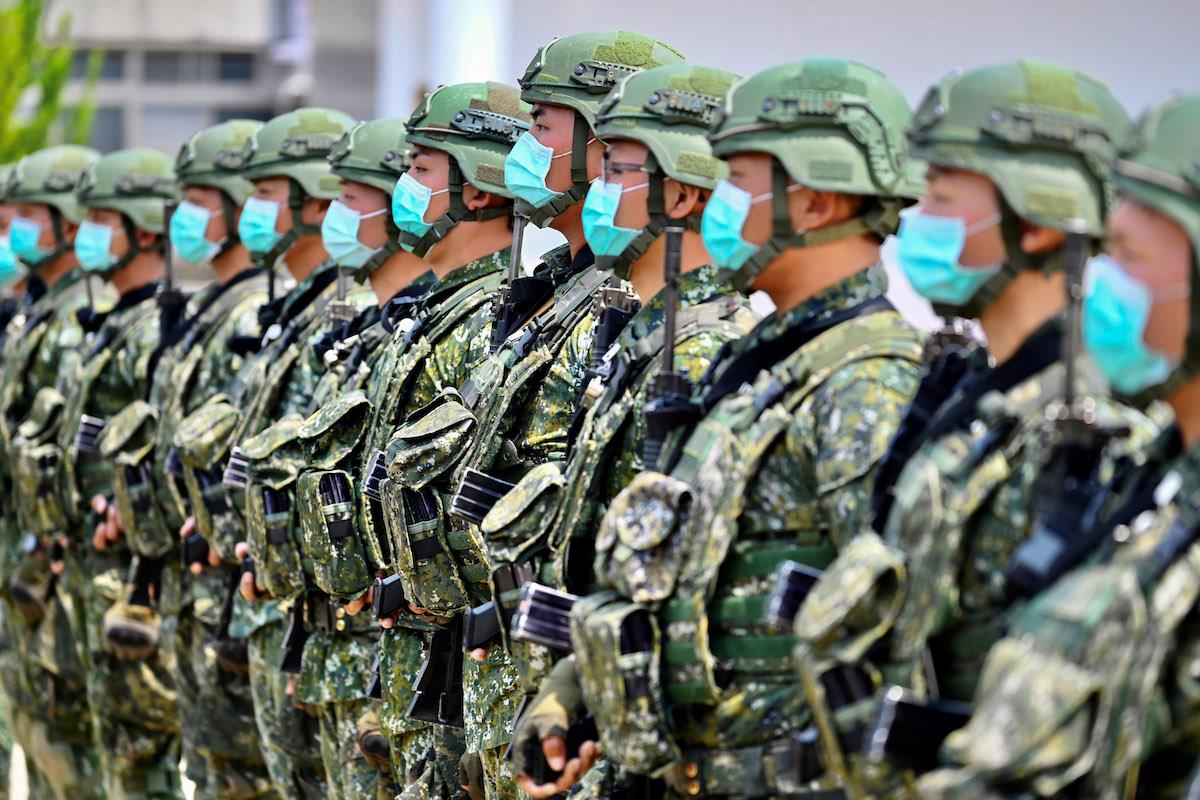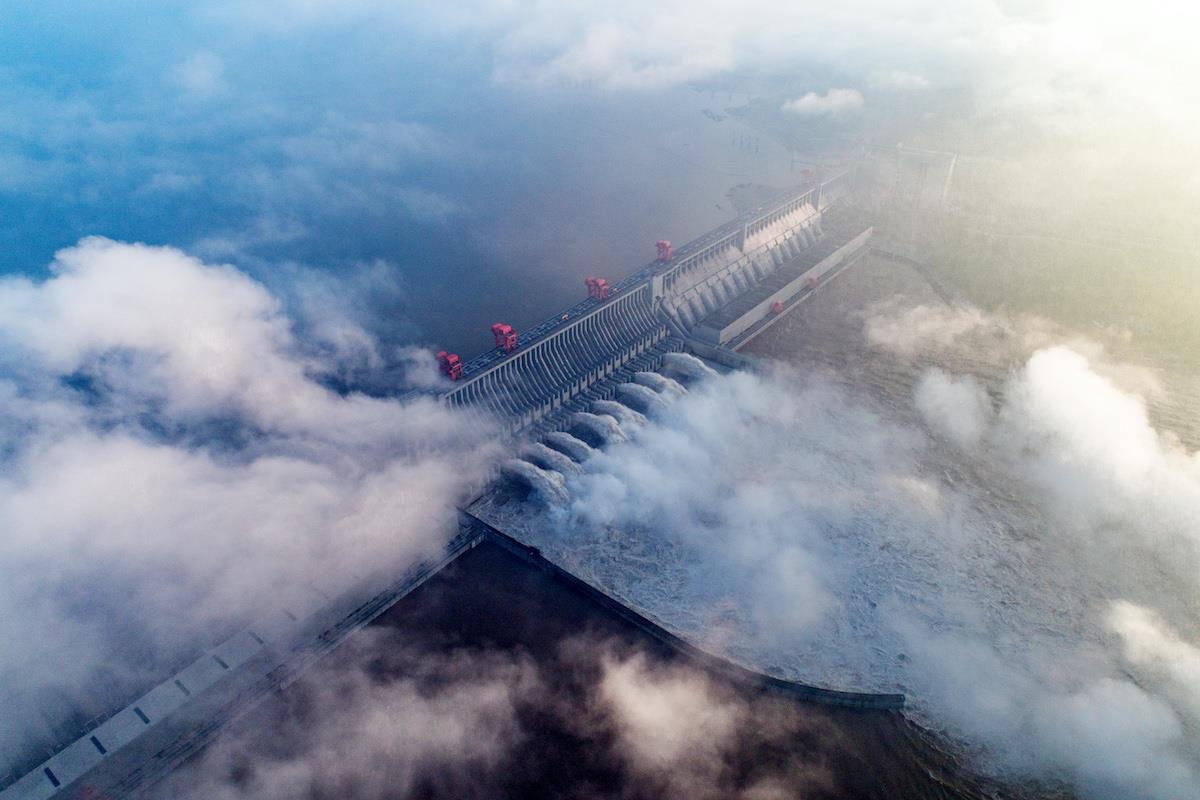(MENAFN- Asia Times) China's large-scale aerial maneuvers in skies near Taiwan on Monday, covered with misleading headlines and alarmist reports in global media, have sent shockwaves of alarm rippling across the region and beyond.
The alarm, however, is largely unmerited – and indeed, there is no panic being reported among the Taiwanese public.
Contrary to scare-mongering in English language media –“Brazen China Steadily Ramps Up Warplane Flights in Taiwan's Airspace” US News and World Report stormed – the Chinese aircraft did not breach Taiwan's sovereign air space, much less overfly Taiwan.
In fact, they did not even cross the median point of the Taiwan Strait nor approach within 100 miles of the island.
While it was the biggest such sortie by Chinese forces thus far, pilots from both the mainland and Taiwan are aware of each other's modus operandi, reducing the chances of an accidental clash and subsequent escalatory spiral.
And a wider range of strategic factors suggests that the status quo ante in the Taiwan Strait is not going to be altered – at least not in the near future.
Of course, that is not the message in some Chinese state media.
'The PLA's military drills in the Taiwan Straits are no longer limited to declaring China's sovereignty over the island, but to implement various forms of assembly, mobilization, assault and logistical preparations that are required to take back the island of Taiwan,” the ever-hawkish, Beijing-run Global Times warned on October 4 .
“It has increasingly become the new mainstream public opinion … that the mainland should make earnest preparations based on the possibility of combat.”

Chinese frigates steam in formation during a maritime training exercise in the South China Sea. Photo: Zhang Bin
Perhaps. But what the paper neglected to mention is that the PLA has not yet conducted a 360-degree combined arms exercise aimed at taking an island, suggesting preparations are incomplete. Moreover, any invasion force build up would be impossible to hide, enabling the US to deploy deterrent forces to the region.
Moreover, Taiwan may have a doomsday deterrent in its armory that – while not a weapon of mass destruction per se – could devastate the mainland. That does not mean risks are falling, however. And current timing is an issue.
“This is the period of national anniversary of the People's Republic of China on 1 October, which is very important period for the Chinese Communist Party and President Xi Jinping,” said Kim Hin-ho, a China specialist and professor of political science at Seoul's Dankook University.“And Taiwan's National Day is 10 October.”
Beyond timing, Xi has multiple reasons – both domestic and international – to generate tensions in the Taiwan Straits.
Domestically, these include sweeping social and economic policies that have been dubbed by some as a“red reset” that appears to be putting China's society and economy on a confrontation footing and aims to inculcate hyper-nationalism.
China is also facing power outages and a spreading property crisis ignited by the highly indebted China Evergrande. These problems may indeed compel Xi to divert his populace's attention from at-home woes toward overseas foes.
Those foes seem to be increasing, as the US moves to boost alliances in the region aimed at containing China.
A UK aircraft carrier strike group is on an unprecedented tour of East Asia, conducting drills with two US carriers and a range of regional forces including Australian, Indian, Japanese and Vietnamese – all nations wary of China. A frigate from the group also traversed the Taiwan Strait, to Beijing's displeasure.

A US Marine F35 stealth jet aboard the HMS Queen Elizabeth during exercises in East Asian waters. Photo: AFP / Roy Issa
The recent Australia-UK-US, or AUKUS, security agreement has joined the informal“Quad” as a multilateral grouping aimed at containing China in the Indo-Pacific. Beijing has also been irked by recent visits to Taiwan by French lawmakers and a former Australian prime minister.
“These are enormous shows of force, and involve extra-regional countries such as the UK, which have not played a role in Indo-Pacific security for some time,” said Alex Neill, a Singapore-based independent security consultant.
“This plays into the Chinese narrative that the US and its allies are militarizing the region and speaks to Xi's nationalist narrative that the West is trying to suppress China's rise.”
Beijing, which considers democratically run Taiwan a renegade province, has historical reasons to reincorporate the island into the mainland. Now, the Chinese Communist Party – which has former overseas enclaves Hong Kong and Macau fully under its heel – has a new and pressing economic and technological cause to retake Taiwan.
Following the Donald Trump administration's sanctions on semiconductor exports to China, Chinese companies have been bereft of some of the most advanced logic, or system, semiconductors. The leading global fabricator of these cutting-edge chips is Taiwan-based TSMC.
This mix of political, strategic and economic elements suggest there is going to be more, not less, saber rattling to come from Beijing. Yet another factor is linked to Xi's personal political ambitions.
China's aerial drills reinforce Xi's“Taiwan creds” before next year's National People's Congress,” Grant Newsham, a retired US Marine Corps colonel with extensive experience of Japan and Taiwan, told Asia Times.
Facts versus panicky fictions The wave of Chinese aircraft operating near Taiwan in recent days has been unprecedented in number.
The 56 flights on Monday were a daily record, but overall, between Friday and Monday a total of 149 Chinese planes were operational. The package of Chinese assets included fighters, bombers, anti-submarine warfare planes, airborne early warning and command/control aircraft.
In response, Taipei scrambled combat patrol aircraft, issued radio warnings and deployed air defense missile systems, local media reported. Taipei's Defense Ministry publicized the flights in a series of tweets.
This may read like a terrifying scenario. But contrary to multiple reports in English language media, the Chinese aircraft did not enter sovereign Taiwanese air space – much less fly over Taiwan itself.
A glance at the graphics released by Taipei's MOD, and at a map, shows that the majority of the flights stayed well over 160 kilometers south of Taiwan. Even so, and even at this distant range, the Chinese flights were“intruding” into Taiwan's Air Defense Identification Zone, or ADIZ.

According to the Convention on International Aviation, a state“has complete and exclusive sovereignty over the airspace above its territory.” That means airspace directly above its land and its territorial waters, which extend 12 nautical miles (22 kilometers) from its coastline.
An ADIZ is an entirely different matter. Declared unilaterally, an ADIZ, in which a state requires aircraft to identify themselves, is not governed or enforced by any international law. Taiwan's ADIZ covers far more than the air space above its land or even its outlying islands: It overlays the entire Taiwan Strait and large chunks of southern China.
“There is a substantial difference,” between an ADIZ and air space said Newsham. “Flying down towards the southern end of ADIZ is not the same as flying closer to Formosa (Taiwan). And that's why I tend to see this particular incident as a 'demonstration.'
“Taiwan's ADIZ is enormous – its stretches over 1000 miles of sea space – so there is an element of hyperbole in the statements from the Taiwan MOD,” added Neill.“Most of these patrols show patterns – they are patrolling across key strategic air corridors which would be part of a campaign to deter the US from intervening.”
The Chinese patrols did not even breach the mid-point of the body of water separating Taiwan from the mainland.“They are not crossing the median line of the Taiwan Strait,” Neill asserted.
Though the maneuvers are not as provocative as they have been painted, they offer Beijing's defense planners a range of benefits, experts say.
“These drills are good real-world practice for the PLA and are taking place in the area they intend to fight,” said Newsham. They also offer Beijing the opportunity to“size up” the operational and political responses of not just Taiwan, but also the US, Japan and the rest of the democratic bloc, he added.
While the PLA Air Force – unlike the US Air Force and US Navy – has zero recent combat experience, the drills in the Taiwanese ADIZ grant it increased experience and operational range.
“I tend to view this latest aerial activity as a long-term strategy of gradually strangling Taiwan,” said Newsham. “And the PLA is improving its capabilities via these sorts of exercises.”
They could also breed a dangerous contempt of familiarity among the defenders
“The air incursions are increasing each time and this begs the question as to whether this is a type of feint,” Neill said.“You build up the numbers to the point where it turns out to be the real deal – and [Taiwanese forces] don't realize it is happening until it happens.”

Soldiers wearing face masks to guard against Covid-19 listen to an address by Taiwan President Tsai Ing-wen during her visit to a military base in Tainan, southern Taiwan, on April 9, 2021. Photo: AFP/Sam Yeh Why war is not imminent The probes put the Taiwanese air defense network on alert, and strain the nerves of its air defense operators and interceptor pilots.
But while this raises the possibility of an accident – such as an aerial collision, or even a missile being fired – which could ignite the dreaded“spiral of escalation”, this risk is ameliorated somewhat by a little-known fact: pilots on both sides get to know each other's habits.
“You know who you are dealing with,” a former US serviceman who crewed reconnaissance planes that flew intelligence-gathering missions over the South and East China Seas told Asia Times.
“We had Chinese linguists aboard and we could hear their radio conversations and get to know the call signs. If you know the behaviors of your counterparties – if you know that a certain guy likes to come in close and show his ass – you are prepared for it.”
Still, familiarity is not always a reliable de-escalator. The Chinese pilot killed when his jet collided with a US intelligence aircraft off Hainan Island in 2001,“was known as a maverick,” said Neill.
Yet even that incident did not lead to a shoot-out.“The Chinese handled it magnificently,” admitted the retired US air crewman.“They basically treated it as an immigration violation, which they did not prosecute.”
There is even a little-known agreement between China and the US that covers what happens when two parties unexpectedly encounter each other, noted Neill.
The multinational Code for Unplanned Encounters at Sea, or CODES , was signed by 21 nations, including the US, in China in 2014. While Taipei was not a signatory, Neill speculated that some similar agreement may have been secretly reached between Beijing and Taipei.
There are some very, very significant prerequisites that would need to be in place before Chinese forces could launch a cross-Straits attack.
First, the PLA is not fully prepared for such a complex, all-arms operation.
“A joined-up exercise involving land, sea, air, ballistic missile and cyber forces has not yet taken place,” said Neill, who cites US analyses that suggest the PLA will not gain the capability to take Taiwan before 2027.
Other experts are not convinced by these arguments, given the experience and capabilities the PLA has built up over decades.

Taiwan is planning to bolster its invasion defenses by adding cruise missiles and naval mines, officials said. Credit: National Interest.
“China has been able to launch an attack on Taiwan – and have some hope of success –since at least a decade ago, and over the last decade they've improved their capabilities considerably and they keep improving,” said Newsham.
“I've heard that claim that they've supposedly never conducted a combined drill of a certain sort and therefore cannot invade Taiwan. I'm not convinced by it,” he said.
Newsham insists that Beijing's forces are a very real threat.
“It's been a while since the free world had to face a major power that was looking to take territory and dominate,” said Newsham, who says he is very worried about Taiwan's future. But he concedes that the attack will not“happen tomorrow.”
Any invasion would require a massive shift of forces: Jet fighters and bomber squadrons would need to be pre-positioned, as would transport aircraft for airborne troops. Marine and ground troops would need to mass near shipping in ports. And an anti-air, anti-missile and anti-drone umbrella would need to be erected to protect the build-up.
This would be impossible to hide from US surveillance, intelligence and electronic reconnaissance assets.
“We'd have weeks of notice before the PLA could mount an invasion,” said the retired US aircrewman. That forewarning would grant the US time to deploy assets to the region – notably to its bases in Okinawa, which are perfectly sited to intervene in any Taiwan crisis.
And there is another, more shadowy, deterrent which might give any Chinese hawk pause for thought before going for broke and attempting to invade Taiwan.
When it comes to hardware sales, the US has traditionally“given Taiwan enough to be a prickly porcupine, but not to have offensive capabilities,” said Neill. That has spurred Taiwan to develop domestic capabilities, which include the Hsiung Fung family of hypersonic missiles, which can hit both land and sea-based targets.
Taiwan does not possess nuclear warheads but one target of even a conventional missile strike could unleash nightmarish devastation across China.
“The latest version of the Hsiung Fung III missile system may have the capability of hitting the huge dam across the Yangtze,” said Neill.
Historically, Yangstze floods have killed millions. In today's even more densely populated land, an explosive breach of the giant Three Gorges Dam would be an unprecedented catastrophe for central China.

The mighty Three Gorges Dam on the Yangtze River is a possible strategic vulnerability for China if it attacks Taiwan. Photo: AFPMENAFN07102021000159011032ID1102934306